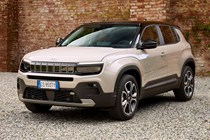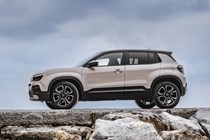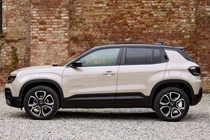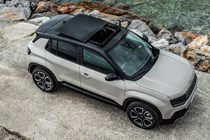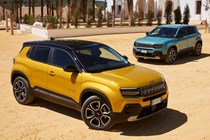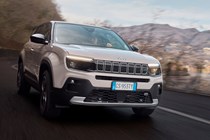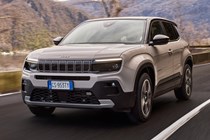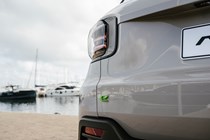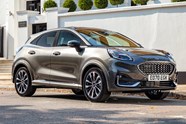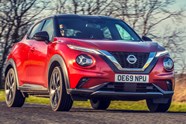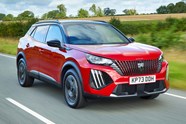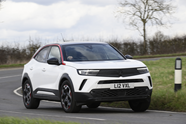Jeep Avenger review
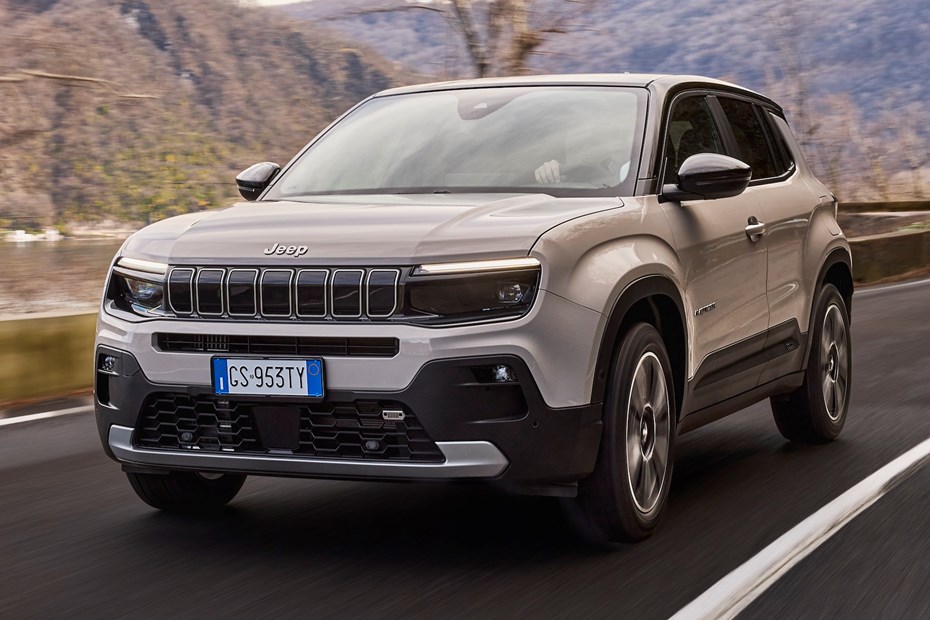
At a glance
| Price new | £23,859 - £29,419 |
|---|---|
| Used prices | £18,340 - £25,740 |
| Road tax cost | £190 |
| Insurance group | 22 - 24 |
Get an insurance quote with

|
|
| Fuel economy | 48.7 - 57.6 mpg |
| Miles per pound | 7.1 - 8.4 |
| View full specs for a specific version | |
Available fuel types
Petrol
Pros & cons
- Handsome looks
- Thrifty in town
- Not too heavy
- Competent, not interesting
- Limited rear legroom
- Unsettled ride
Jeep Avenger SUV rivals
Overview
The Jeep Avenger was launched as an electric car, but it has been followed up by petrol and hybrid versions aimed right at the heart of the family SUV market. These three pillars follow the lead established by cars such as the Peugeot 3008 and Vauxhall Mokka in being fuelled from the old-school pump as well as your EV charger.
Jeep is marketing this as an electrified option in the small SUV class. So you get a range of petrol-powered Avengers without any battery assistance, and another in 48v e-Hybrid form. The electric version is covered in its own review. The latter uses a small 0.9kWh battery and 21 kW motor attached to the gearbox and starter motor. What it doesn’t do yet is promise performance or four-wheel-drive, but that will come with the 4Xe full-hybrid version, due to be launched later.
The Avenger e-Hybrid’s most obvious competitors are probably to the left and right of it on the dealership floor – and in this respect the e-Hybrid has them both beat. But other cars to consider are Stellantis Group stablemates – the Fiat 600, Vauxhall Mokka and Peugeot 2008. Beyond that, you’re looking at the more conventional Nissan Juke, Volkswagen T-Cross and the current class champ, the Ford Puma.
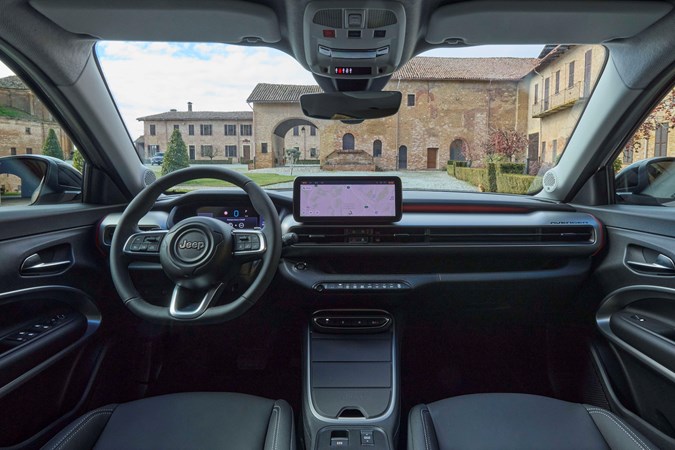
What’s it like inside?
The interior is almost identical to the electric Avenger, and that means it’s functional without feeling cheap, but also without feeling premium. The spec means the interior can change, but on the whole it does the job. Annoyingly, UK cars don’t get the ambient lightning available with left-hand-drive.
Space up front is fine, but those in the second row will feel pretty cramped and can often find themselves accidentally providing lumbar support for the front passengers. Sitting behind myself would’ve seen my knees either side of my spinal column.
The boot is pretty small too, as it is on the Avenger EV. The hybrid battery fits neatly under the left-hand front seat (drivers’ side in the car we drove) which is the only real impact on interior space.
Engines and hybrid motors
Jeep engineers have slipped in a 48V system that provides a helping to the 1.2-litre Puretech petrol engine also used in of Citroen, Peugeot, DS, Vauxhall and Fiat models. It’s a very mild hybrid. a 0.9 kWh lithium-ion battery is paired to a 21kW motor, which itself is integrated to a 48V belt starter and a new-double-clutch six-speed transmission – the only one available with the eHybrid.
That adds up to total of 130hp, along with a 0-62mph figure of 10.9 seconds. Like the EV and the pure petrol model, the power goes to the front wheels – only the upcoming 4Xe will be all-wheel-drive. The e-Hybrid isn’t much heavier than the standard car at 1,280kg, Stellantis saying it’s just a 60kg heavier than a conventional Avenger.
Jeep claims the electric motor of the e-Hybrid improves fuel consumption by 20% for combined WLTP economy of 57.6mpg.
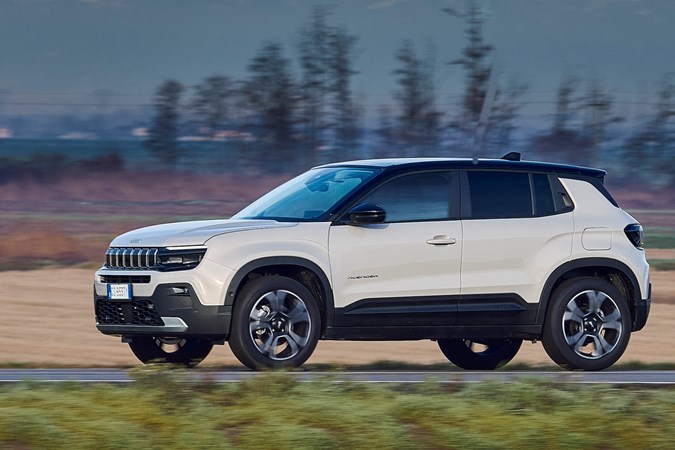
What’s it like to drive?
The e-Hybrid is the pick of the Avenger bunch because it combines the best of the petrol and EV models. In Normal and Eco drive modes, it prefers to use EV power only in town, so it’s super refined in slow-moving traffic. And it often turns off the engine when going downhill. In Sport mode it’s a little more engaging, keeping the engine on at all times.
Steering strikes a mixture between feedback and lightness, and is well judged for a family SUV. In the same way, the brakes are solid and dependable and feel more connected than you’d expect given the hybrid system’s regenerative braking. The only downside? You can’t change the level of regenerative braking like you can in some other hybrids.
The transmission is the final piece of the puzzle and does a decent if not astounding job. The car feels less interesting to drive than the manual petrol but still light enough to feel more dynamic than the EV. It sounds like it holds gears for a little longer than you’d expect, but that’s the case with many of its rivals.
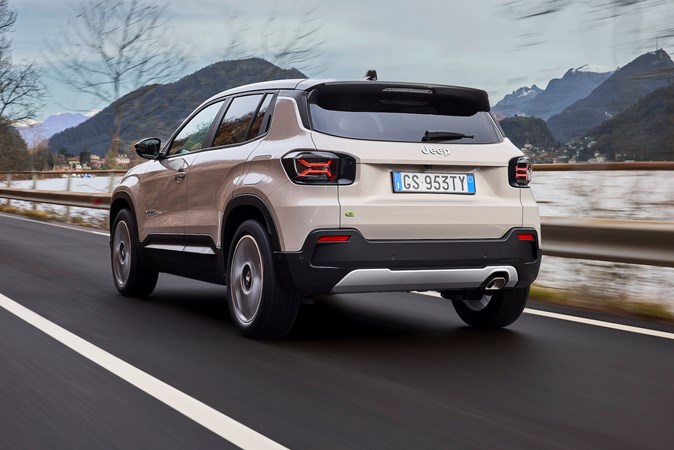
What models and trims are available?
Whichever engine you choose, you get a choice of three trim levels – Longitude, Latitude and Summit. Not all the safety kit comes as standard in the lesser models, but the usual features and some driver-assistance technology is included in the Summit. Having said that, you can option up the Longitude and Latitude with these features.
There’s little externally to tell them apart. The only difference outside is a green ‘e’ badge on the e-Hybrid’s boot and the lack of an exhaust tailpipe on the electric version. That’s not a bad thing though, as you’ll find the same surprisingly charming design on the outside, with modern lamps and a traditional-looking grille doing its best to pull in more youthful buyers.
Pricing is competitive. The e-Hybrid starts at £25,000, not too much more than the pure petrol at £23,600 – the electric version starts at £34,800. For a lighter, slightly slower car that’s easier to live with, and often more interesting to drive, we reckon the 1.2-litre petrol is the one to go for.
Read on for the Parkers verdict on the petrol-powered and e-Hybrid Jeep Avengers.



